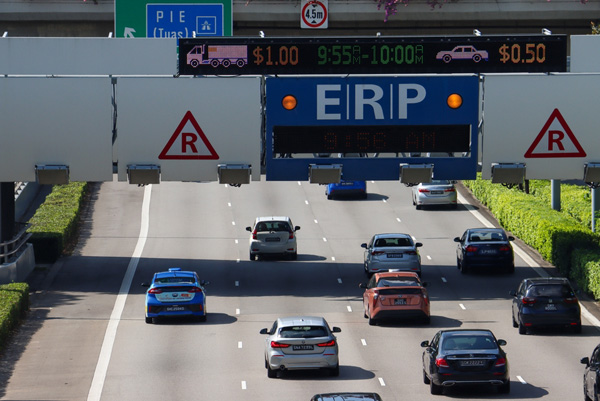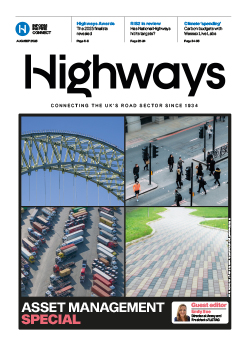A new white paper on road user charging from the Chartered Institution of Highways and Transportation (CIHT) maps the issues with both realism and hope and is a thoughtful contribution to the debate.
The opening gambit (some might say presumption) of the CIHT’s new white paper What is the future of Mobility Pricing? is that ‘a national pay-as-you-drive scheme is becoming thinkable as a policy option for the UK’ – though it quickly follows this up with the caveat that ‘political opposition means it is unlikely to be adopted in the short term’.
Indeed, although the paper was written before the general election was announced, it notes that both the Conservatives and Labour have ruled out such a scheme, which would seem to preclude the policy from happening for at least another five years.
For those following this debate, it may be a case of déjà vu all over again as road user charging always seems to be at least five to 10 years out of reach. Despite this, the paper has something new to offer and it is not just the good sense to be open about (the limitations of) the art of the possible.
Naturally enough, it notes that much of the renewed interest in the policy is linked to the decline in Fuel Duty due to zero emission vehicles. It highlights the 2022 report on road pricing by the Transport Select Committee, which argues for politicians to prepare a charging regime to replace the loss of revenue from Fuel Duty, ‘eventually equating to around 4% of all tax receipts – or 5p on the basic rate of income tax’.
However, the CIHT paper balances this against the observation that high levels of opposition to road charging in the UK ‘will be difficult to overcome if any new scheme is widely understood as being driven solely by the government’s financial woes’.
Even more interestingly, it adds: ‘It would be a big mistake to believe – as some have argued – that it is inevitable that a universal road user charge will ultimately replace Fuel Duty…The potential loss of up to 4% of all tax receipts is a problem at the macro level, but the government has many other options for raising revenue, many of them less politically problematic.’
This is a perceptive point and the report’s main thrust could be seen as a rebuttal of complacency, whether you are for or against road user charging. It urges the profession not to see the policy as inevitable, but also to fight back against the ‘depressing’ idea that it is simply ‘too difficult to deliver’.

The ERP is Singapore's long-established electronic road pricing system
It goes on to say: ‘We will need to build our capability to develop proposals for charging that address three interlinked sets of questions: ‘Policy: what is the rationale for introducing charges for road use, what problems is it intended to help solve, and what other policies need to be in place to achieve these goals?
‘Practical: how will the scheme be designed, under what kind of business model will it operate, what technology options flow from these choices, what data will be needed, and how will it be collected and managed?
‘Political: what will make the proposal viable in its specific political and legal context, and what communications and public engagement requirements flow from this analysis?’
Digging deeper, the CIHT asks a series of more specific, technical questions in the hope of rallying ‘together a group of stakeholders to develop new thinking’.
These questions are insightful and draw on lessons from the wide variety of road user charging systems now in play across Europe and the United States. The paper’s round-up of these schemes is one of its many useful attributes. For instance, it asks: ‘How can we operationalise the insight from the USA that up to 50% of the budget for successful charging schemes has been spent on communications and stakeholder engagement?’
It also asks: ‘How in the UK’s centralised political system can we draw on the USA’s state-level experience that buy-in can be generated by introducing opt-in charging schemes that offer drivers a more attractive deal than current taxes?’
It wisely understands the need to put user choice over how and when to pay at the centre of future charging schemes, asking how this might be achieved.
‘How can we ensure that the technology platforms and operating models that support new schemes (a) deliver a good user experience, ideally allowing drivers to pay for multiple services in one place and (b) do not close off opportunities for further development, up to and including a UK-wide pay-per-mile road user charging scheme?’
Other questions include: how can we make better use of the data generated by the roughly 40 million vehicles in the UK and overcome privacy issues? How can we build on the technical infrastructure developed to support low traffic neighbourhoods and parking management, and what are the political lessons from this work?
To aid these discussions there are various mini case studies and thought experiments throughout the paper. These include useful points such as whether digital traffic regulation orders could help create the necessary digital map of the network for user charging, and whether the National Parking Platform (NPP) could give us lessons for any future road user charging scheme.
The NPP is funded by the Department for Transport and hosted by Manchester City Council. A series of pilots have been successful and development work is underway to support a nationwide roll-out from autumn this year, with 200 local authorities signed up.
‘If successful, this should end the need for drivers to download multiple parking apps and will create a market that encourages competition and continuous improvement to customer service.’
Clearly, the idea of substituting the growing web of charges, from congestion charging to low emission and tolling schemes, might encourage people to consider the simplicity of a single national app payment. However, the paper argues that there is a widespread consensus that a simple pay-per-mile charge to replace Fuel Duty can and should co-exist alongside other charges, thus removing this incentive from the debate.
The paper’s meta-analysis of the fairly wide range of reports on road user charging from think tanks and research organisations is another helpful attribute.
It boils them down to a list of things they agree on (see Fig 1 below), which it would appear are most things, and a couple of areas of disagreement.
The two areas of disagreement in most papers are apparently: which vehicles should be the first to move over to pay-per-mile pricing and should the new regime be driven from the centre or should we be empowering bottom-up change?
The first question centres on the choice of HGVs or EVs. The second question is more specifically about whether central government should build a single national charging platform integrating all national and local charges, or limit itself to setting standards for an open system that allows players such as insurers different ways to pay alongside other services.
It is possible that by ending with a long list of agreements and such a short list of disagreements the report might slightly bias the reader. It is also possible this is intentional. While acknowledging the public’s opposition to road user charging, it doesn’t delve into it as much as it could. Indeed, the paper seems more inclined to marshall and sharpen the sector’s arguments until there is a more opportune time to attack. It does an excellent job and deserves to gather the group of stakeholders it is looking for in support of this ongoing work.
As Margaret Mead said: ‘Never doubt that a small group of thoughtful, committed, citizens can change the world. Indeed, it is the only thing that ever has.’





